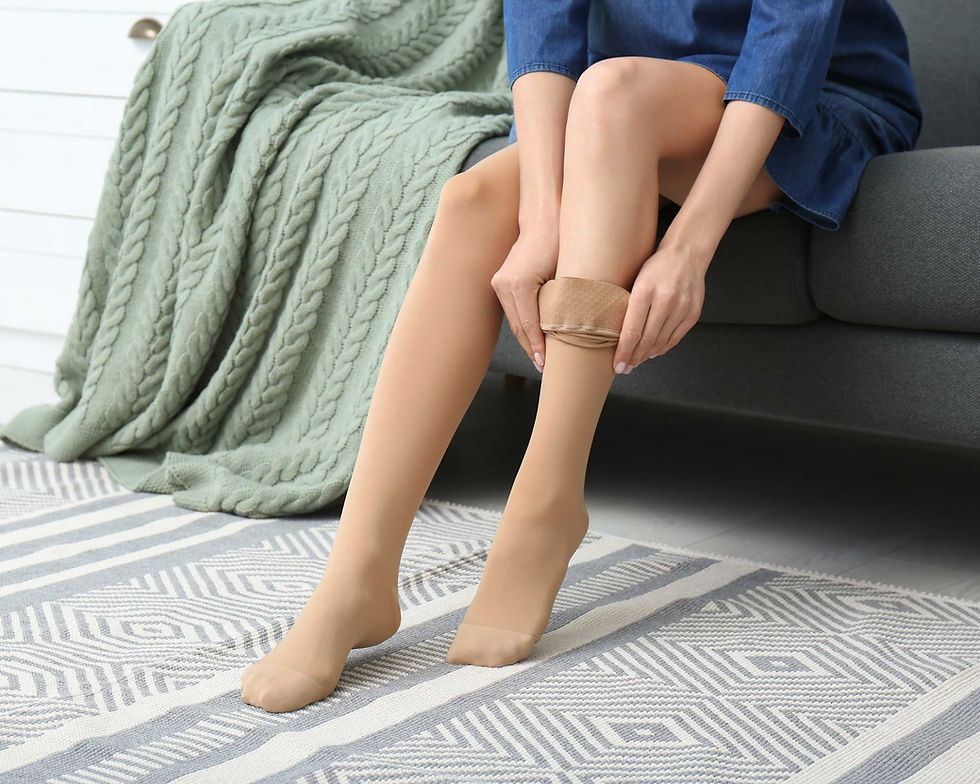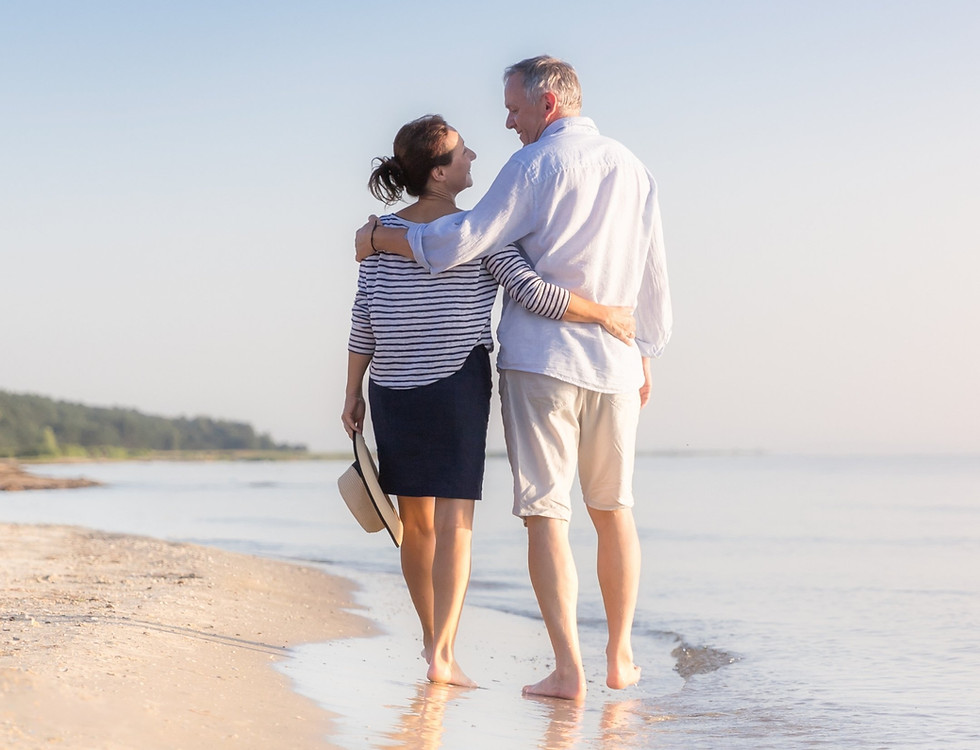The Power of Compression: How Compression Stockings Help Your Veins and More
- Jeffrey H. Miller, M.D.

- Jul 27
- 3 min read
Updated: Aug 12
If you’ve ever been told to wear compression stockings during a long flight, after surgery, or after a vein procedure, you might have wondered: Do they really help? The answer is a strong yes.
When used in the right situations, compression stockings can be a simple and effective way to boost circulation, prevent complications, and even help you recover faster.
Let’s break down the science in everyday language.

What Do Compression Stockings Actually Do?
Compression stockings gently squeeze your legs, applying the most pressure at your ankles and gradually less as they move up. This helps push blood back toward your heart, reduces swelling, and keeps your veins working more efficiently.
Proven Benefits of Compression Stockings
They Help Prevent Blood Clots (DVT)
Deep vein thrombosis (DVT) is a dangerous blood clot that can form in your legs, especially after surgery or during long travel. Compression stockings can cut the risk of DVT by over 60% in some settings.
That’s why they’re often recommended for hospital stays or long flights.
They Lower the Risk of Post-Thrombotic Syndrome
If you’ve had a DVT before, you may be at risk for long-term symptoms like leg swelling, heaviness, and skin changes—known as post-thrombotic syndrome.
Studies show that wearing compression stockings after a DVT may reduce this risk, especially when worn consistently.
They Improve Healing of Venous Leg Ulcers
People with chronic venous insufficiency, where veins don’t return blood to the heart efficiently, often develop skin ulcers on their legs.
Compression stockings play a vital role in healing these wounds, especially when combined with modern in-office vein procedures that promote healing and help prevent recurrence.
They Reduce Swelling and Discomfort
Even if you haven’t had a clot or ulcer, compression stockings can reduce leg fatigue and swelling, especially for people who stand or sit for long periods.
Some athletes even use them during or after exercise to help muscles recover faster.
The Bottom Line
Compression stockings aren’t just for older adults or hospital patients. They’re a smart, science-backed way to support your vein health, prevent complications, and speed up recovery—especially after vein treatment, travel, or surgery.
Just make sure you get the right size and wear them as directed.
References
Kakkos SK et al. Graduated compression stockings for prevention of deep vein thrombosis. Cochrane Database Syst Rev.
Kahn SR et al. Compression stockings to prevent post-thrombotic syndrome. Lancet Haematol.
O’Donnell TF et al. Management of venous leg ulcers: Clinical practice guidelines. J Vasc Surg.
Shalhoub J et al. Graduated compression stockings in surgical patients: updated meta-analysis. Br J Surg.
Partsch H. Compression therapy: clinical and experimental evidence. Ann Vasc Dis.
Brophy-Williams N et al. Compression garments and recovery from exercise: a meta-analysis. Sports Med.
The Lancet. Compression vs. no compression after endovenous ablation. 2023.
Stop Letting Your Legs Hold You Back
If you have restlessness, heaviness, aching, swelling, throbbing, or itchiness in your legs—or you notice varicose veins or spider veins—it's time to see a vein specialist.
Explore More of the Miller Vein Blog
Explore expert insights on vein health, treatment options, and wellness tips. Stay informed, and take the next step toward happier, healthier legs!
Prefer Learning on YouTube?
Enjoy easily digestible video content that expands your understanding of vein conditions and their treatments.

